Environment and Climate Change Canada (ECCC) Project
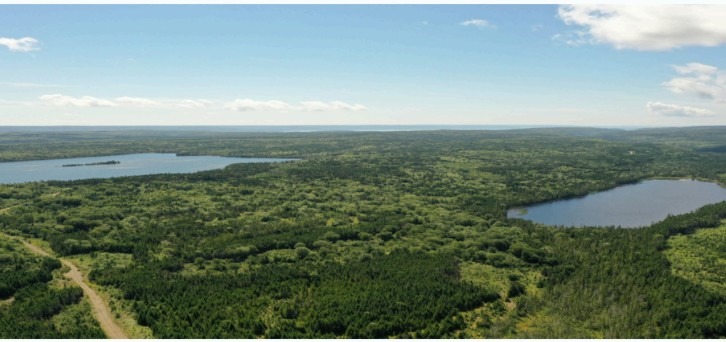
Each year ECCC supports a wide range of projects undertaken by many different organizations representing various sectors of society; their Recipients include local community groups, Aboriginal organizations, conservation groups, universities and research institutions, international organizations, other orders of government, and the private sector. The work that their Recipients do to protect the quality of the natural environment, conserve biodiversity, and contribute to research and knowledge is very important.
in 2022 the Canadian biospheres, the members of the Canadian Biosphere Regions Association (CBRA) were offered funding to carry out various initiatives specific to their own needs.
The BLBRA was successful in our request to fund research on: Qualifying United Nations Educational, Scientific and Cultural Organization (UNESCO) Buffer Zones as Other Effective Area-based Conservation Measures Within the Bras d’Or Lake Biosphere Reserve of Nova Scotia.
The project funding comes with numerous deliverables and oversight. A general understanding of the process can be seen below. (ECCC Recipient Guide)

Our initial 3-year project (late 2022 – 2024) focused on collecting hydrological data and modeling to better understand hydrological processes in the area within and adjacent to the proposed Eskasoni First Nation IPCA, identify areas that could make up a potential buffer zone adjacent to the IPCA and identify other areas within the Bras d’Or Lake Biosphere buffer zone that could satisfy the international guidance and standards for areas to qualify and be reported as OECMs. The project proceeded with the participation of Dalhousie University, EXP and Eskasoni Fish and Wildlife.

In 2024, a two year extension obtained with a new end date of March 2026. The two-year extension allows the BLBRA to continue to support the development of Indigenous Protected and Conserved Areas (IPCAs), continue to identify hectares to contribute to the protection of biodiversity and work with partners, current and new, to advance the protection of biodiversity in Canada. These activities will support Target 3 of the Global Biodiversity Framework as results will support and contribute to the national goal of at least 30 per cent of Canada’s terrestrial and inland water being recognized as protected areas or other effective area-based conservation measures areas by 2030. By the end of the funding period, the project aims to introduce new protection mechanisms for at least an estimated 1000 to 3000 hectares which will result in qualification as an OECM and may be submitted to CPCAD.
Activities will also support Target 12 of the Global Biodiversity Framework as results will support and contribute to the enhancement of biodiversity in populated areas by mainstreaming the conservation and sustainable use of biodiversity through biodiversity-inclusive regional planning, ecological connectivity and integrity, and improved human health, well-being and connection to nature.
ECCC Project Summary 2023-2024
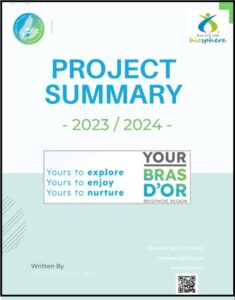
Hydrology research in Christmas Brook Watershed
Sian Borden and Dr. Lauren Somers, researchers from Dalhousie University provided an update on their research to the BLBRA board on March 21, 2024. They reminded us that approximately half of Nova Scotians rely on groundwater for their water supply. That number is even higher in Indigenous and rural communities. Groundwater also provides a source of cool water to streams, which can be important for cold water fish (like salmon) and aquatic ecosystems generally, especially during hot dry weather. (Figure 1)
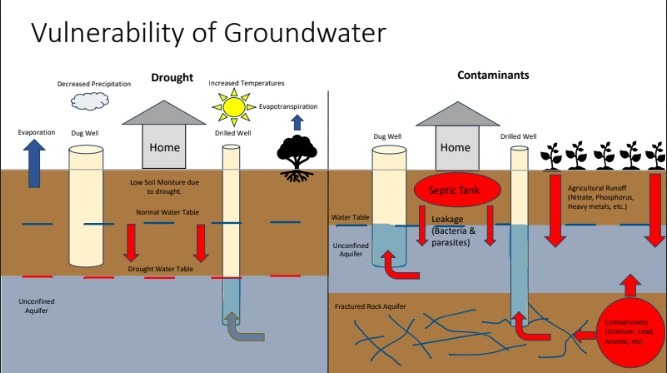
Climate Change Impacts on Ground Water Recharge in a Low-Mountain Area
A Master of Applied Science student at Dalhousie University, Julia Gillette, working on our project, created a poster, “Climate Change Impacts on Groundwater Recharge in a Low-Mountain Area” which looks at the impacts of climate change on the Christmas Brook watershed’s groundwater resources. Her work specifically aims to quantify how groundwater resources will change in a warmer future with less snow and more rain.
The information was presented by Julia Gilette at the Canadian Geophysical Union (CGU) and Canadian Meteorological and Oceanographic Society (CMOS) Congress in Saskatoon, Canada during the week of May 25th. The conference had hundreds of researchers from across Canada attend and the theme of the conference was “Resilient Futures” which focused on proactive climate change research in the fields of hydrology, oceanography, meteorology, and more.
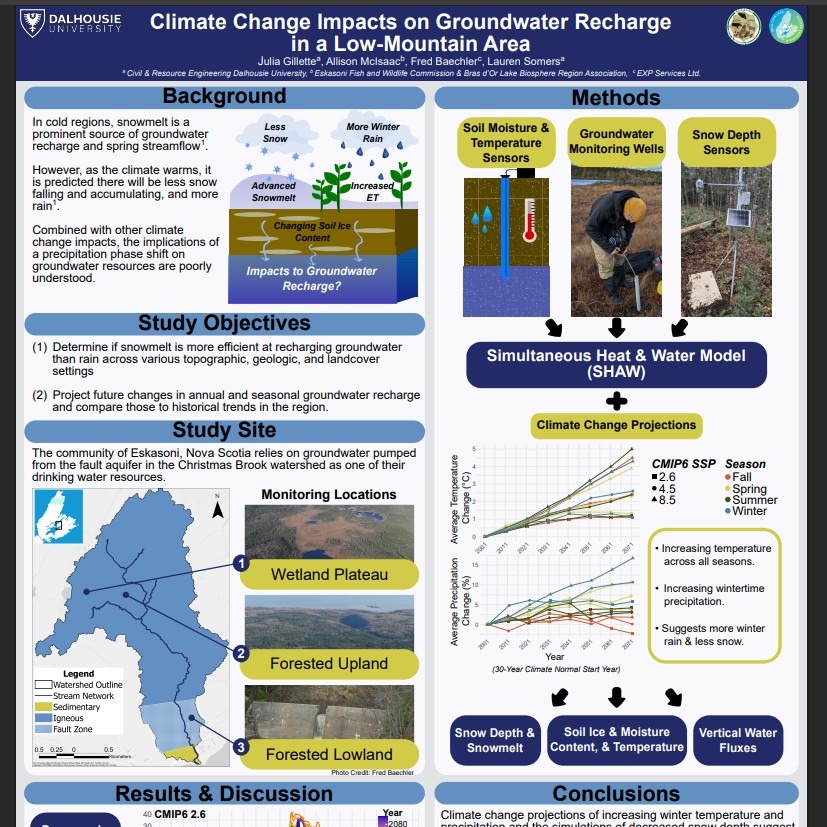
Characterizing Pathways of Groundwater Recharge and Discharge in a Geologically and Topographically Complex Watershed
Reid Dauphinee, a Dalhousie University masters student in the Department of Civil and Resource Engineering and working on our Environment and Climate Change Canada (ECCC) project, was recently awarded his masters degree after a successful defense of his thesis “Characterizing Pathways of Groundwater Recharge and Discharge in a Geologically and Topographically Complex Watershed”
“The overarching goal of this research is to improve our understanding of recharge pathways and groundwater-surface water interactions in cold, montane watersheds with complex topography and geology. The focus of this study is on Christmas Brook watershed in the Eskasoni Mi’kmaq community, Cape Breton, Nova Scotia, Canada, which provides a representative and accessible study site to achieve this goal in partnership with the community. This study will improve our understanding of how the montane uplands support water resources.
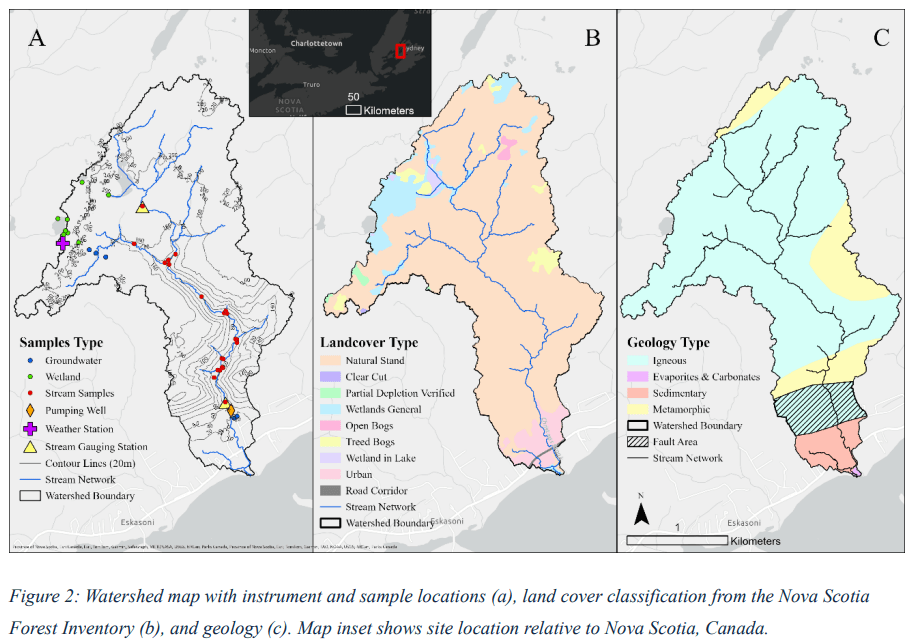
The specific objectives are to:
- Quantify the contributions of different sources and areas within the watershed to streamflow and fault-groundwater recharge, using tracer-based modeling to evaluate hydrological processes.
- Characterize groundwater flow paths to the fault aquifer and assess the relative contributions of different flow pathways within the watershed.
- Integrate the findings from Objectives 1 and 2 to improve understanding of hydrological dynamics in the watershed and develop actionable recommendations for source water protection and watershed management.” (page 13 of the paper)
Reid’s work with numerical modeling of the creating a groundwater flow model showed that streamflow infiltration contributes 60% of pumping well water, while the local recharge into the fractured rock around the wells accounted for the remaining 40%. As for determining the aquifer extent, Reid modeled three different fault shapes and provided improved understanding of groundwater-surface water interactions. The team has submitted a paper for publication (Hydrological Processes) based off of his work and is currently under external review.
